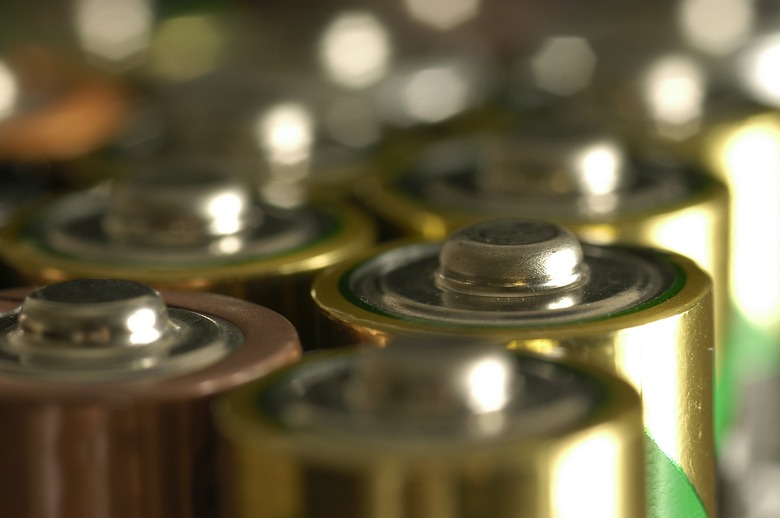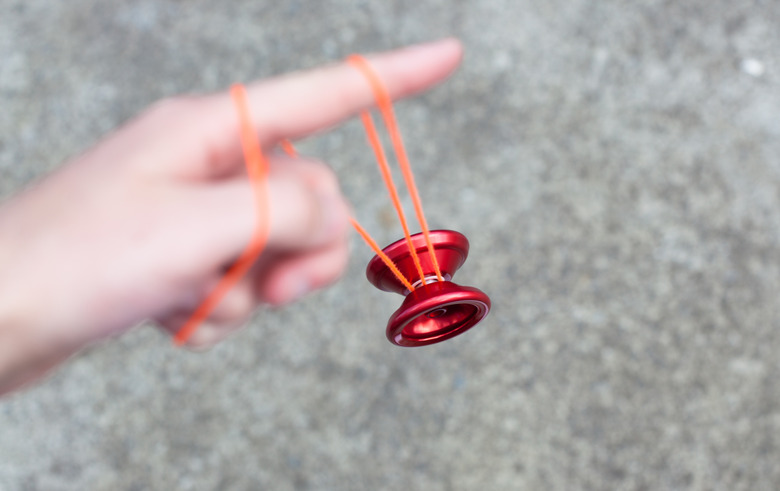How To Introduce Kinetic & Potential Energy To Fifth Grade Students
According to the U.S. Energy Information Administration, energy basically comes in two forms—potential or kinetic. Potential energy is stored energy and the energy of position. Examples of potential energy are chemical, gravitational, mechanical, and nuclear. Kinetic energy is motion. Examples of kinetic energy are electrical, heat, light, motion, and sound. Perhaps the easiest way to introduce these concepts to fifth graders is by using motion to demonstrate the difference between the two forms of energy. Use one or more of these ideas to get the kids in your class excited about science and have fun at the same time.
Energy Demonstrations
Step 1
Display an animated toy and the batteries it requires. The batteries are an example of potential energy or stored energy. Place the batteries into the toy and turn it on. The potential energy in the batteries has been converted to kinetic energy as the toy takes action.
Step 2
Wind the string around the yo-yo, and place the string loop around your middle finger. When the yo-yo is in your hand, it is full of potential energy because of it's position. Release the yo-yo and allow it to fall, changing the potential energy to kinetic energy. When the yo-yo hits the bottom of the string, it is charged with kinetic energy and is able to wind itself back to the top of the string.
Step 3
Stretch a rubber band between your fingers. By stretching the rubber band, you are giving it potential energy. Release the rubber band, causing it to shoot across the room with the power of kinetic energy.
Step 4
Position a skateboard ramp against a wall. Roll a tennis ball toward the ramp. The ball will use the kinetic energy provided by you to travel up the slope of the ramp and up the wall. When the ball reaches the peak of its roll, it converts to potential energy that again converts to kinetic energy as it begins to roll back down the ramp. Discuss the impact of using more kinetic energy on the amount of potential energy given to the ball.
Step 5
Position the skateboard ramp away from the wall. Hold a tennis ball above the ramp and drop it from different heights to demonstrate how the potential energy of an object increases depending on how high and how heavy it is. Measure how far the ball rolls off the ramp to show how the different heights affect how much kinetic energy is converted by the ball as it falls. Repeat the experiment using a marble, golf ball, and baseball.
Things Needed
- Animated toy
- Batteries
- Yo-yo
- Rubber band
- Skateboard ramp
- Tennis ball
- Marble
- Golf ball
- Baseball
- Measuring tape
References
Cite This Article
MLA
Briggs, Wendy. "How To Introduce Kinetic & Potential Energy To Fifth Grade Students" sciencing.com, https://www.sciencing.com/introduce-energy-fifth-grade-students-7774275/. 24 April 2017.
APA
Briggs, Wendy. (2017, April 24). How To Introduce Kinetic & Potential Energy To Fifth Grade Students. sciencing.com. Retrieved from https://www.sciencing.com/introduce-energy-fifth-grade-students-7774275/
Chicago
Briggs, Wendy. How To Introduce Kinetic & Potential Energy To Fifth Grade Students last modified March 24, 2022. https://www.sciencing.com/introduce-energy-fifth-grade-students-7774275/




